Advanced Oxidation Technologies for Water and Wastewater Treatment from Organic Pollutants by Nanostructure Materials
A special issue of Water (ISSN 2073-4441). This special issue belongs to the section "Water Quality and Contamination".
Deadline for manuscript submissions: closed (31 October 2023) | Viewed by 3996
Special Issue Editors
Interests: physical chemistry; materials chemistry; spectroscopy; photoelectron spectroscopy
Interests: heterogeneous photocatalysis; pharmaceutical drug; organic dyes; semiconductor nanomatirials
Special Issues, Collections and Topics in MDPI journals
Special Issue Information
Dear Colleagues,
Water is the most important natural resource in the world and the availability of safe drinking water is a high priority issue for human existence and quality of life. Unfortunately, water resources are coming under increasing pressure due to population growth, over-use and wastage. AOPs are particularly attractive as a method for removing organic pollutants from water using nanostructure materials because they utilize hydroxyl radicals as a major oxidizing agent. Therefore, they can destroy hazardous contaminants, not simply transfer them to another phase, as do air stripping and granular activated carbon adsorption.
The nanostructure semiconductor materials can degrade most kinds of persistent organic pollutants, such as detergents, dyes, pesticides and pharmaceutical drugs, under light illumination. Semiconductors can act as sensitizers for light-induced redox processes due to the electronic structure of the metal atoms.
The aim of the Special Issue “Advanced Oxidation Technologies for Water and Wastewater Treatment from Organic Pollutants by Nanostructure Materials: Latest Advances, Challenges, and Prospects” is to serve scientists through the Latest Advances, Challenges, and Prospects in solving environmental problems. In this context, we request you submit your articles to our Special Issue on or before October 31, 2023, so that it may be included article in the upcoming issue.
Dr. George Tzvetkov
Dr. Nina Kaneva
Guest Editors
Manuscript Submission Information
Manuscripts should be submitted online at www.mdpi.com by registering and logging in to this website. Once you are registered, click here to go to the submission form. Manuscripts can be submitted until the deadline. All submissions that pass pre-check are peer-reviewed. Accepted papers will be published continuously in the journal (as soon as accepted) and will be listed together on the special issue website. Research articles, review articles as well as short communications are invited. For planned papers, a title and short abstract (about 100 words) can be sent to the Editorial Office for announcement on this website.
Submitted manuscripts should not have been published previously, nor be under consideration for publication elsewhere (except conference proceedings papers). All manuscripts are thoroughly refereed through a single-blind peer-review process. A guide for authors and other relevant information for submission of manuscripts is available on the Instructions for Authors page. Water is an international peer-reviewed open access semimonthly journal published by MDPI.
Please visit the Instructions for Authors page before submitting a manuscript. The Article Processing Charge (APC) for publication in this open access journal is 2600 CHF (Swiss Francs). Submitted papers should be well formatted and use good English. Authors may use MDPI's English editing service prior to publication or during author revisions.
Keywords
- advanced oxidation technologies
- nanostructure materials
- organic pollutants
- water purification






